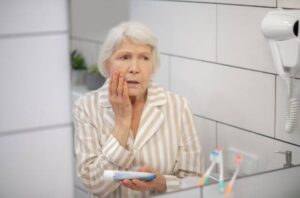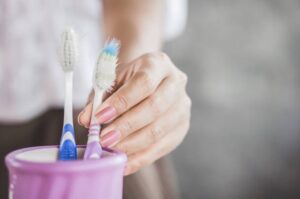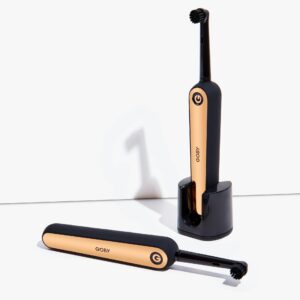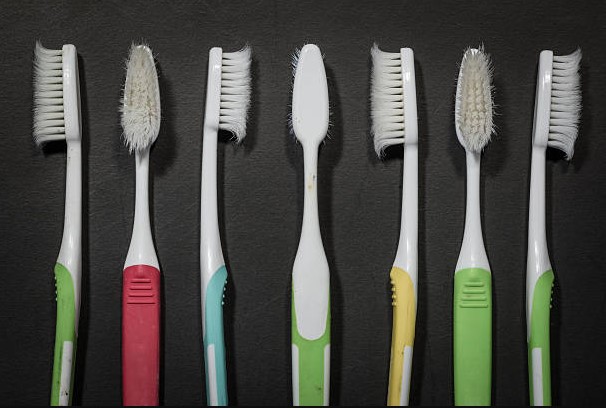Maintaining good oral hygiene is essential for overall health and well-being. Brushing our teeth is a crucial part of our daily oral care routine, but often overlooked is the importance of toothbrush maintenance and replacement. In this article, we will explore the reasons why regular toothbrush replacement is vital for optimal oral health.
Contents
- 1 Historical Background
- 2 Main Discussion Points
- 3 Signs Indicating the Need for a New Toothbrush
- 4 Case Studies or Examples
- 5 Toothbrushes with Different Replacement Frequencies
- 6 Current Trends or Developments
- 7 Research Findings on Toothbrush Replacement and Oral Health
- 8 Challenges or Controversies
- 9 Environmental Impact of Frequent Toothbrush Replacement
- 10 Future Outlook
- 11 Conclusion
- 12 References
Historical Background
Throughout history, toothbrushes have undergone significant evolution. From ancient civilizations using twigs and frayed ends to clean their teeth, to the introduction of modern toothbrush designs, toothbrushes have come a long way. The development of more efficient and effective toothbrushes has revolutionized oral care practices.

Key Concepts and Definitions
Understanding the key concepts related to toothbrush maintenance is essential for maintaining good oral hygiene. Toothbrush bristles play a crucial role in cleaning our teeth and removing plaque and bacteria. However, over time, these bristles can wear out, fray, or become less effective, leading to bacterial buildup and compromised oral health.
Main Discussion Points
Recommended Timeline for Toothbrush Replacement
It is recommended by dentists and the American Dental Association (ADA) to replace your toothbrush every three to four months. Several factors can influence the frequency of replacement, including usage habits and oral health conditions. Regular replacement ensures that your toothbrush remains effective in maintaining good oral hygiene.
Signs Indicating the Need for a New Toothbrush
There are several signs that indicate it is time to replace your toothbrush. Frayed or bent bristles are a clear indication that your toothbrush is no longer effective in removing plaque and bacteria. Foul odor or discoloration of the bristles can also suggest bacterial buildup. Additionally, if you have been ill or have had an infection, it is crucial to replace your toothbrush to prevent reinfection.
Case Studies or Examples

Effects of Using an Old Toothbrush
A case study conducted on individuals who continued using old toothbrushes revealed a significant increase in bacterial load and plaque buildup. This study highlights the importance of regular toothbrush replacement in maintaining optimal oral health.
Toothbrushes with Different Replacement Frequencies
Electric toothbrushes often have replaceable brush heads, making it easier to maintain good oral hygiene. Manual toothbrushes, on the other hand, need to be replaced more frequently. Understanding the differences in replacement frequencies can help individuals make informed choices regarding their toothbrush selection.
Current Trends or Developments
Advances in Toothbrush Technology
With advancements in technology, toothbrushes have become more innovative and efficient. Features like ultrasonic cleaning, pressure sensors, and Bluetooth connectivity for tracking brushing habits have transformed the oral care landscape. These developments contribute to better oral health maintenance.
Research Findings on Toothbrush Replacement and Oral Health
Numerous studies have been conducted to determine the impact of toothbrush replacement on oral health. Research findings consistently emphasize the need for regular toothbrush replacement to avoid bacterial buildup, plaque accumulation, and potential oral health issues.
Challenges or Controversies

Different Viewpoints on Toothbrush Replacement Frequency
While the general consensus recommends replacing toothbrushes every three to four months, there are varying opinions on the exact frequency. Some argue for more frequent replacement, while others suggest longer usage periods. It is essential to consult with dental professionals to determine the most suitable replacement frequency based on individual needs.
Environmental Impact of Frequent Toothbrush Replacement
Frequent toothbrush replacement raises concerns about its environmental impact. With billions of toothbrushes discarded each year, finding sustainable solutions and eco-friendly alternatives is crucial. Manufacturers are exploring recyclable materials and innovative designs to address these concerns.
Future Outlook

Potential Developments in Toothbrush Design
The future of toothbrush design holds exciting possibilities. From biodegradable materials to smart toothbrushes that analyze and monitor oral health in real-time, ongoing research and development aim to enhance the effectiveness and sustainability of toothbrushes.
Incorporation of Technology in Toothbrush Maintenance
Technology continues to play a significant role in oral care. The incorporation of artificial intelligence, sensors, and apps can assist in monitoring oral hygiene practices, providing personalized recommendations, and reminding individuals about toothbrush replacement.
Conclusion
Regular toothbrush replacement is crucial for maintaining optimal oral health. By following dentists’ recommendations and the guidelines set by the ADA, individuals can prevent bacterial buildup, plaque accumulation, and potential oral health issues. The future of toothbrush design and technology holds promising developments to support better oral hygiene practices.
References
To further explore the topic of toothbrush maintenance and replacement, the following references provide valuable insights:
– Dental journals and publications
– ADA guidelines
– Research studies on toothbrush maintenance and oral health.
